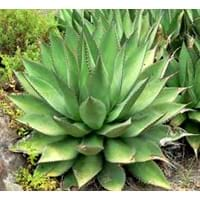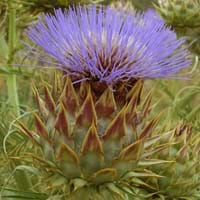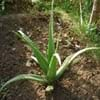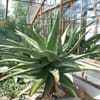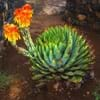Life Span
Perennial
Perennial
Type
Cactus or Succulent
Vegetable
Origin
Western United States, Southwestern United States, Latin America and the Caribbean, Caribbean, Central America, South America
Mediterranean
Types
Agave americana
Agave angustifolia
Agave shawii
Green Globe, Imperial Star, Tempo, Violetto, Symphony
Habitat
Desert, Hardwood forests, Hillside, Humid climates, Rocky Ridges, wastelands
Sandy areas
USDA Hardiness Zone
Not Available
7-10
AHS Heat Zone
Not Available
9-1
Sunset Zone
Not Available
8, 9, 14, 15, 16, 17, 18, 19, 20, 21, 22, 23, 24
Habit
Not Available
Rosette/Stemless
Minimum Height
Not Available
Minimum Width
Not Available
Flower Color
Not Available
Purple
Flower Color Modifier
Not Available
Not Available
Fruit Color
Brown
Not Available
Leaf Color in Spring
Not Available
Gray Green, Silver
Leaf Color in Summer
Not Available
Gray Green, Silver
Leaf Color in Fall
Not Available
Gray Green, Silver
Leaf Color in Winter
Not Available
Not Available
Leaf Shape
Long linear and narrow
Glandular
Plant Season
Spring, Summer, Fall, Winter
Spring
Sunlight
Full Sun
Partial shade
Type of Soil
Not Available
Well drained
The pH of Soil
Not Available
Slightly Acidic
Soil Drainage
Well drained
Well drained
Bloom Time
Not Available
Early Fall, Fall
Tolerances
Not Available
Drought
Where to Plant?
Ground, Pot
Ground
How to Plant?
Seedlings
Seedlings, Transplanting
Plant Maintenance
Medium
Medium
Watering Requirements
Does not require lot of watering
Form a Soil ring to water efficiently, Needs watering once a week, Water twice a day in the initial period
In Summer
Lots of watering
Lots of watering
In Spring
Moderate
Moderate
In Winter
Average Water
Average Water
Soil pH
Not Available
Slightly Acidic
Soil Type
Not Available
Well drained
Soil Drainage Capacity
Well drained
Well drained
Sun Exposure
Full Sun
Partial shade
Pruning
Remove deadheads, Requires little pruning
No pruning needed in the early stages, Prune after flowering, Remove deadheads
Fertilizers
All-Purpose Liquid Fertilizer
All-Purpose Liquid Fertilizer
Pests and Diseases
Red blotch
Aphids, Gray mold, Powdery mildew, Root rot
Plant Tolerance
Drought
Drought
Flower Petal Number
Single
Not Available
Showy Fruit
Not Available
No
Edible Fruit
Not Available
No
Fragrant Flower
Not Available
No
Fragrant Fruit
Not Available
No
Fragrant Leaf
Not Available
Not Available
Fragrant Bark/Stem
Not Available
No
Showy Bark
Not Available
No
Foliage Texture
Bold
Coarse
Foliage Sheen
Not Available
Matte
Invasive
Not Available
No
Self-Sowing
Not Available
Yes
Attracts
Not Available
Butterflies
Allergy
Not Available
Intestinal gas
Aesthetic Uses
Showy Purposes
Not Used For Aesthetic Purpose
Beauty Benefits
Not Available
Not Available
Environmental Uses
Air purification
Air purification
Medicinal Uses
constipation, Gastrointestinal disorders
Anemia, High cholestrol, Kidney problems, Liver problems
Part of Plant Used
Leaves, Sap, Seeds, Stem
Flowers, Fruits
Other Uses
Pulp can be used to make rope place mats and other goods, Used in making beverages
Can be made into a herbal tea, Used as primary flavor in Italian Liqours
Used As Indoor Plant
No
No
Used As Outdoor Plant
Yes
Yes
Garden Design
Container, Feature Plant, Foundation, Houseplant, Rock Garden, Wall
Not Available
Botanical Name
AGAVE
Cynara cardunculus
Common Name
Century plant
Artichoke
In Hindi
रामबांस
Artichoke
In German
Agave
Artischocke
In French
Agave
Artichaut
In Spanish
Agave
Alcachofa
In Portuguese
Agave
Alcachofra
Phylum
Not Available
Anthophyta
Class
Liliopsida
Eudicotyledones
Order
Asparagales
Asterales
Family
Agavaceae
Asteraceae
Clade
Monocots
Not Available
Tribe
Not Available
Cynareae
Subfamily
Agavoideae
Not Available
Number of Species
Not Available
Difference Between Agave and Artichoke
If you are confused whether Agave or Artichoke are same, here are some features about those plants to help you choose better. Many people think that these two plants have the same characteristics, but one can see Agave and Artichoke Information and learn more about it. Fertilizers required for proper growth of Agave are All-Purpose Liquid Fertilizer, whereas for Artichoke fertilizers required are All-Purpose Liquid Fertilizer. Hence, one should know the basic difference between Agave and Artichoke if you are planning to have them in your garden to enhance its beauty.
<
Flowering PlantsImportance of Agave and Artichoke
Want to have the most appropriate plant for your garden? You might want to know the importance of Agave and Artichoke. Basically, these two plants vary in many aspects. Compare Agave and Artichoke as they differ in many characteristics such as their life, care, benefits, facts, etc. Every gardener must at least have the slightest clue about the plants he wants to plant in his garden. Compare their benefits, which differ in many ways like facts and uses. The medicinal use of Agave is constipation and Gastrointestinal disorders whereas of Artichoke is Anemia, High cholestrol, Kidney problems and Liver problems. Agave has beauty benefits as follows: Not Available while Artichoke has beauty benefits as follows: Not Available.
Compare Facts of Agave vs Artichoke
How to choose the best garden plant for your garden depending upon its facts? Here garden plant comparison will help you to solve this query. Compare the facts of Agave vs Artichoke and know which one to choose. As garden plants have benefits and other uses, allergy is also a major drawback of plants for some people. Allergic reactions of Agave are Not Available whereas of Artichoke have Intestinal gas respectively. Having a fruit bearing plant in your garden can be a plus point of your garden. Agave has no showy fruits and Artichoke has no showy fruits. Also Agave is not flowering and Artichoke is flowering. You can compare Agave and Artichoke facts and facts of other plants too.
